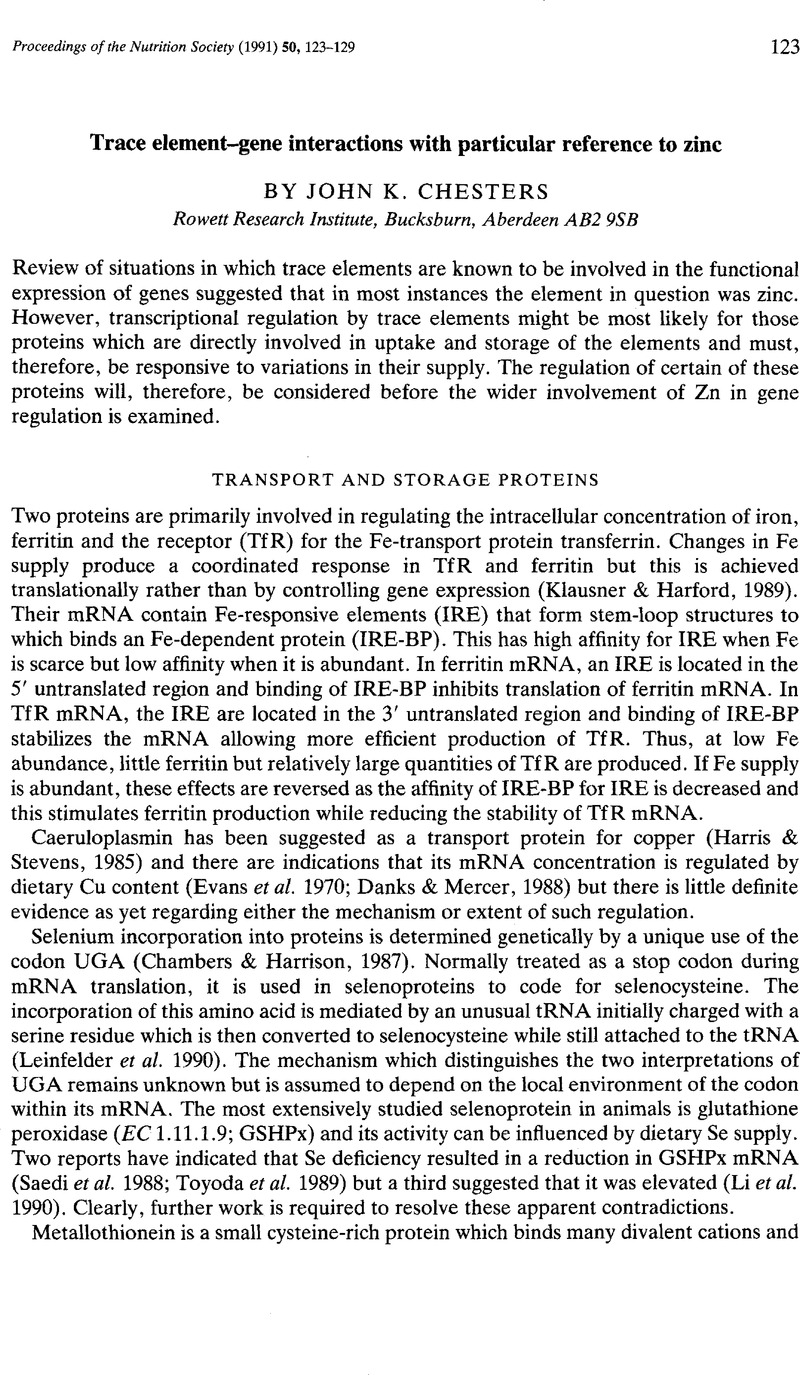Crossref Citations
This article has been cited by the following publications. This list is generated based on data provided by Crossref.
Freake, H C
1993.
Molecular biological approaches to studying trace minerals: why should clinicians care?.
Journal of the American College of Nutrition,
Vol. 12,
Issue. 3,
p.
294.
Chesters, John K.
Petrie, Linda
and
Lipson, Kenneth E.
1993.
Two zinc‐dependent steps during G1 to S phase transition.
Journal of Cellular Physiology,
Vol. 155,
Issue. 3,
p.
445.
Olinto, Maria Teresa Anselmo
Victora, Cesar Gomes
Barros, Fernando C.
and
Gigante, Denise Petrucci
1995.
Twenty-Four-Hour Recall Overestimates the Dietary Intake of Malnourished Children.
The Journal of Nutrition,
Vol. 125,
Issue. 4,
p.
880.
Bax, Christopher M. R.
and
Bloxam, David L.
1995.
Two major pathways of zinc(II) acquisition by human placental syncytiotrophoblast.
Journal of Cellular Physiology,
Vol. 164,
Issue. 3,
p.
546.
Mengheri, E.
Vignolini, F.
and
Gaetani, S.
1995.
Zinc deficiency affects the expression of IL-2 but not of IL-2R in spleen lymphocytes of rats..
Nutrition Research,
Vol. 15,
Issue. 4,
p.
505.
Rimbach, G.
Markant, A.
Pallauf, J.
and
Krämer, K.
1996.
Zink — Update eines essentiellen Spurenelements.
Zeitschrift für Ernährungswissenschaft,
Vol. 35,
Issue. 2,
p.
123.
Rainsford, K. D.
and
Zeitlin, B.
1998.
Copper and Zinc in Inflammatory and Degenerative Diseases.
p.
79.
MacDonald, Ruth S.
2000.
The Role of Zinc in Growth and Cell Proliferation.
The Journal of Nutrition,
Vol. 130,
Issue. 5,
p.
1500S.
Freake, Hedley C.
Govoni, Kristen E.
Guda, Krishna
Huang, Chunli
and
Zinn, Steven A.
2001.
Actions and Interactions of Thyroid Hormone and Zinc Status in Growing Rats.
The Journal of Nutrition,
Vol. 131,
Issue. 4,
p.
1135.
Hershfinkel, Michal
Moran, Arie
Grossman, Nili
and
Sekler, Israel
2001.
A zinc-sensing receptor triggers the release of intracellular Ca
2+
and regulates ion transport
.
Proceedings of the National Academy of Sciences,
Vol. 98,
Issue. 20,
p.
11749.
Sandstead, Harold H.
2001.
Importance of the report “Syndrome of iron deficiency anemia, hepatosplenomegaly, hypogonadism, dwarfism and geophagia”.
The Journal of Trace Elements in Experimental Medicine,
Vol. 14,
Issue. 2,
p.
145.
Tan, Beiping
and
Mai, Kangsen
2001.
Zinc methionine and zinc sulfate as sources of dietary zinc for juvenile abalone, Haliotis discus hannai Ino.
Aquaculture,
Vol. 192,
Issue. 1,
p.
67.
Howard, John McLaren
2002.
The Detection of DNA Adducts (Risk Factors for DNA Damage). A Method for Genomic DNA, the Results and Some Effects of Nutritional Intervention.
Journal of Nutritional & Environmental Medicine,
Vol. 12,
Issue. 1,
p.
19.
Park, Ki-Sook
Lee, Nam-Gu
Lee, Ki-Hoo
Seo, Jeong Taeg
and
Choi, Kang-Yell
2003.
The ERK pathway involves positive and negative regulations of HT-29 colorectal cancer cell growth by extracellular zinc.
American Journal of Physiology-Gastrointestinal and Liver Physiology,
Vol. 285,
Issue. 6,
p.
G1181.
Hostetler, Chris E.
Kincaid, Ron L.
and
Mirando, Mark A.
2003.
The role of essential trace elements in embryonic and fetal development in livestock.
The Veterinary Journal,
Vol. 166,
Issue. 2,
p.
125.
Wong, Victor V.T.
Nissom, Peter M.
Sim, Siow‐Leng
Yeo, Jessna H.M.
Chuah, Song‐Hui
and
Yap, Miranda G.S.
2006.
Zinc as an insulin replacement in hybridoma cultures.
Biotechnology and Bioengineering,
Vol. 93,
Issue. 3,
p.
553.
Ryu, Jung Min
Lee, Min Young
Yun, Seung Pil
and
Han, Ho Jae
2009.
Zinc chloride stimulates DNA synthesis of mouse embryonic stem cells: Involvement of PI3K/Akt, MAPKs, and mTOR.
Journal of Cellular Physiology,
Vol. 218,
Issue. 3,
p.
558.
ZHAO, H.-X.
CAO, J.-M.
LIU, X.-H.
ZHU, X.
CHEN, S.-C.
LAN, H.-B.
and
WANG, A.-L.
2011.
Effect of supplemental dietary zinc sources on the growth and carbohydrate utilization of tilapia Smith 1840, Oreochromis niloticus × Oreochromis aureus.
Aquaculture Nutrition,
Vol. 17,
Issue. 1,
p.
64.
Akram, Shahzad K
Carlsson‐Skwirut, Christine
Bhutta, Zulfiqar A
and
Söder, Olle
2011.
Placental IGF‐I, IGFBP‐1, zinc, and iron, and maternal and infant anthropometry at birth.
Acta Paediatrica,
Vol. 100,
Issue. 11,
p.
1504.
HISAR, O.
YANIK, T.
KOCAMAN, E.M.
ARSLAN, M.
SLUKVIN, A.
and
GONCHAROVA, R.
2012.
Effects of diludine supplementation on growth performance, liver antioxidant enzyme activities and muscular trace elements of rainbow trout (Oncorhynchus mykiss) juveniles at a low water temperature.
Aquaculture Nutrition,
Vol. 18,
Issue. 2,
p.
211.



